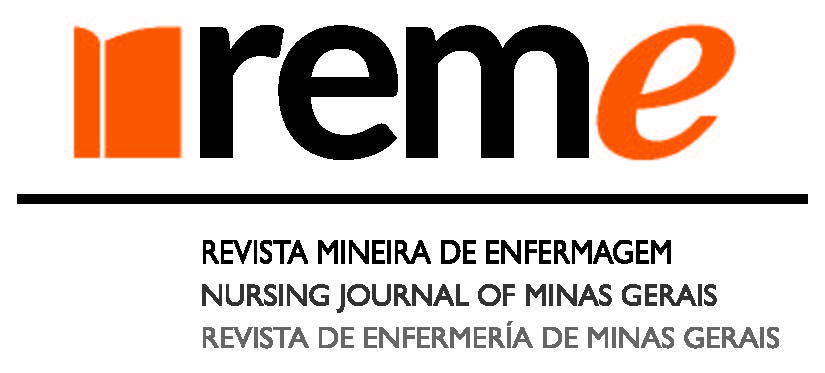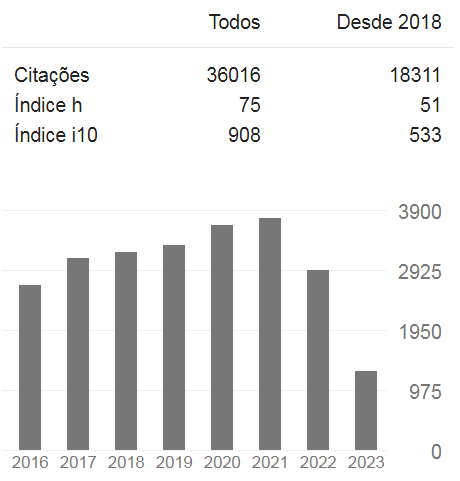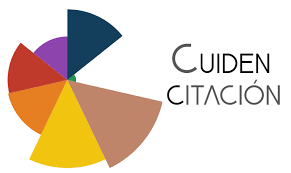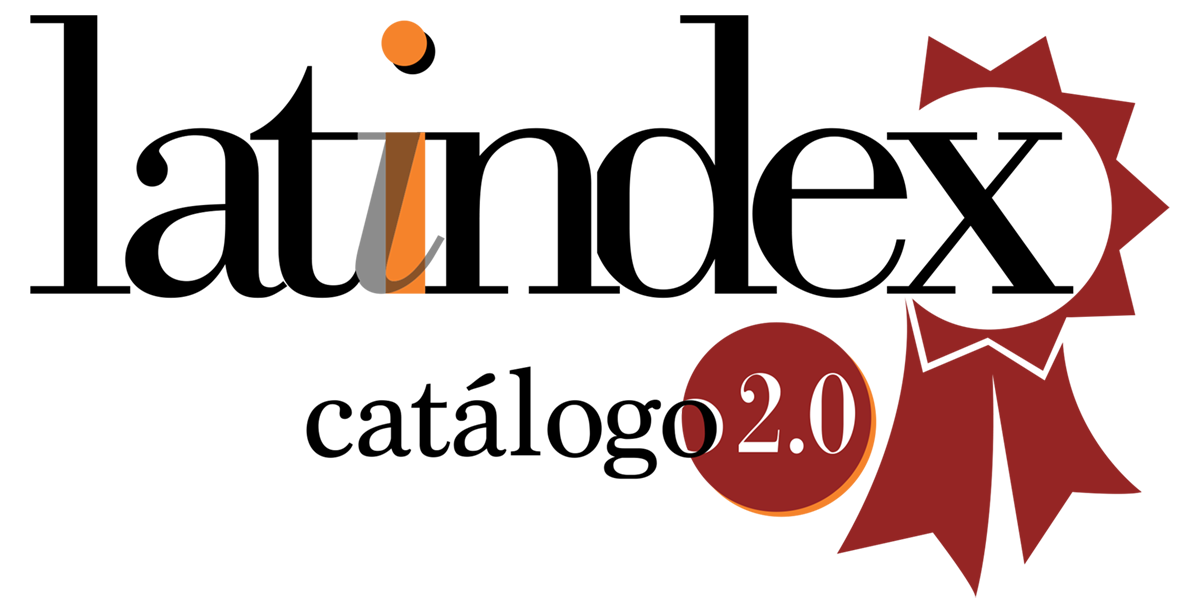Factors related to the pattern of alcohol consumption in rural women
DOI:
https://doi.org/10.35699/reme.v26i.39431Keywords:
Alcoholism, Women, Rural Population, Alcohol DrinkingAbstract
Objective: to investigate factors related to the pattern of alcohol consumption in rural women. Method: this is a quantitative study of non-probabilistic convenience sampling carried out with 259 women from a rural community in Bahia in primary health care. A structured form and the Alcohol Use Disorders Identification Test were used. Data were analyzed using descriptive statistics to estimate the independent contribution of each variable to the probability of outcomes related to alcohol consumption. Logistic regression analysis was applied using the R 4.0.2 software for Windows, with variables in decreasing order of statistical significance. Results: the sample was composed of women between 30 and 49 years old, predominantly black, with religion, with a partner, who complete high school, remunerated activity, family income less than one minimum wage, and living in their own or assigned home. Having a religion reduces the chance of consuming alcohol by 0.15%. Living in a house with up to 3 residents, “not being injured because of drinking” and having a religion increase, respectively, by 89.1, 21.7, and 8.43% the chances of staying in the low-risk zone. Not having a religion increases the chances of moderate drinking by 97.4%. Being injured because of drinking increases the chances of making harmful consumption of alcoholic beverages by 98.9%. Not having a religion and being injured because of drinking increases the chances of using alcohol with probable dependence by 99.7%. Conclusion: religion proved to be a protective factor for greater consumption of alcoholic beverages. On the other hand, being injured or hurting someone because of drinking was characterized as a risk factor.
Downloads
References
United Nations Office on Drugs and Crime. World drug report 2020. Socioeconomic characteristics and drug use disorders. Viena: UNODOC, 2020[citado em 2020 out. 07]. Disponível em: https://wdr.unodc.org/wdr2020/field/WDR20_Booklet_5.pdf
Veloso C, Monteiro CFS. Consumption of alcohol and tobacco by women and the occurrence of violence by intimate partner. Texto Contexto Enferm. 2019[citado em 2021 abr. 29];28:e20170581. Disponível em: https://doi.org/10.1590/1980-265X-TCE-2017-0581
Laranjeira R, Madruga CS, Pinsky I, Caetano R, Mitsuhiro SS, Castello G. II Levantamento Nacional de Álcool e Drogas (LENAD) - 2012. São Paulo: INPAD; UNIFESP; 2014[citado em 2021 abr. 6]. Disponível em: https://inpad.org.br/wp-content/uploads/2014/03/Lenad-II-Relat%C3%B3rio.pdf
World Health Organization. Global status report on alcohol and health. Geneva: WHO; 2018[citado em 2021 abr. 29]. Disponível em: https://www.who.int/substance_abuse/publications/global_alcohol_report/en/
Brasil. Prevenção ao uso indevido de drogas Capacitação para Conselheiros e Lideranças Comunitárias. Ministério da Justiça. Secretaria Nacional de Políticas sobre Drogas - SENAD. 3 ed. – Brasília (DF); 2012[cited 2022 Mar 28]. Disponível em: https://mppr.mp.br/arquivos/File/Projeto_Semear/Material_Capacitacao/Curso_Prevencao_ao_uso_indevido_de_Drogas_Capacitacao_para_Conselheiros_e_Liderancas_Comunitarias_2011_SENAD.pdf
Brasil. Ministério da Saúde. Secretaria de Vigilância em Saúde. Vigitel Brasil 2019: vigilância de fatores de risco e proteção para doenças crônicas por inquérito telefônico. Brasília, DF: Ministério da Saúde, 2019[citado em 2022 mar. 23]. Disponível em: https://bvsms.saude.gov.br/bvs/publicacoes/vigitel_brasil_2019_vigilancia_fatores_risco.pdf
Brasil. Ministério da Saúde. Secretaria de Vigilância em Saúde. Vigitel Brasil 2018: vigilância de fatores de risco e proteção para doenças crônicas por inquérito telefônico. Brasília, DF: Ministério da Saúde, 2019[citado em 2020 mar. 15]. Disponível em: https://www.gov.br/saude/pt-br/centrais-de-conteudo/publicacoes/publicacoes-svs/vigitel/vigitel-brasil-2018.pdf/view
Polanska G, Kaleta D. Correlates of Alcohol Consumption Among a Socially-Disadvantaged Population in Poland. Int. J. Ambiente. Res. Saúde Pública. 2020[citado em 2022 mar. 19];17(23):9074. Disponível em: https://doi.org/10.3390/ijerph17239074
Brasil. Ministério da Saúde. Secretaria de Vigilância em Saúde. Vigitel Brasil 2020: vigilância de fatores de risco e proteção para doenças crônicas por inquérito telefônico. Brasília, DF: Ministério da Saúde, 2020[citado em 2022 mar. 23]. Disponível em: https://www.gov.br/saude/pt-br/centrais-de-conteudo/publicacoes/publicacoes-svs/vigitel/relatorio-vigitel-2020-original.pdf/view
Ebling SBD, Silva MRS, Farias FLR. Abusive alcohol consumption by rural women: Primary Health Care. Revista Enfermagem UERJ. 2021[citado em 2022 mar. 19];29:e58317. Disponível em: https://doi.org/10.12957/reuerj.2021.58317
Stringhini S, Carmeli C, Jokela M, Avedaño M, Muennig P, Guida F, et al. Socioeconomic status and the 25 x 25 risk factors as determinants of premature mortality: a multicohort study and meta-analysis of 1.7 million men and women. The Lancet. 2017[citado em 2021 out. 14];389(10075):1229-1237. Disponível em: https://doi.org/10.1016/S0140-6736(16)32380-7
Babor TF, Higgins-Biddle JC, Saunders JB, Monteiro MG. AUDIT-The alcohol use disorders identification test: guidelines for use in primary care. World Health Organization, Department of Mental Health and Substance Dependence. 2001[cited 2022 abr 10]41p. Disponível em: http://apps.who.int/iris/bitstream/handle/10665/67205/WHO_MSD_MSB_01.6a.pdf;jsessionid=3A2E13388A26710243A60F32DAD35C5E?sequence=1
Silva-Junior, FJG, Monteiro, CFS. Alcohol and other drug use, and mental distress in the women’s universe. Rev. Bras. Enferm. 2020[citado em 2021 abr. 29];73(1):e20180268. Disponível em: http://dx.doi.org/10.1590/0034-7167-2018-0268
Nascimento DFB, Mota GS, Souza BBS Porto PN, Silva CTO, Pires CGS et al. Associação entre fatores sociodemográficos e consumo de bebida alcoólica em mulheres rurais. Rev. Rene. 2020[citado em 2022 mar. 19];21:e44478. Disponível em: http://dx.doi.org/10.15253/2175-6783.20202144478
Heredia LPD, Ramirez EGL, PCF, Vargas D. Efecto de las variables sociodemográficas y de vulnerabilidad en el patrón de uso de alcohol en mujeres universitarias. Texto Contexto Enferm. 2017[citado em 2021 abr. 29];26(3):e6860015. Disponível em: https://doi.org/10.1590/0104-07072017006860015
Silva MGB, Lyra TM, Diniz GT. The pattern of alcohol consumption among the users of the Family Health Units in the municipality of Recife (PE). Saúde Debate. 2019[citado em 2021 abr. 29];43(122):836-847. Disponível em: https://doi.org/10.1590/0103-1104201912214
Ribeiro, LS, Damacena GN, Szwarcwald CL. Prevalência e fatores sociodemográficos associados ao beber pesado no Brasil: análises transversais da Pesquisa Nacional de Saúde. Revista Brasileira de Epidemiologia. 2021[citado em 2022 mar. 19];24:e210042. Disponível em: https://doi.org/10.1590/1980-549720210042
Queiroz NR, Portella LF, Abreu AMM. Associação entre o consumo de bebida alcoólica e tabaco e a religiosidade. Acta Paul. Enferm. 2015[citado em 2021 abr. 29];28(6):546-552. Disponível em: https://doi.org/10.1590/1982-0194201500091
Carvalho AP, Silva TC, Valença PAM, Santos CFBF, Colares V, Menezes VA. Consumo de bebida alcoólica e violência física entre adolescentes: quem é o preditor? Ciência e Saúde Coletiva. 2017[citado em 2021 abr. 29];22(12):4013-4020. Disponível em: https://doi.org/10.1590/1413-812320172212.06172016
Galvão GA, Souza AS, Santos VTC, Vieira LO, Meira LC, Costa LC, et al. Memory of children living with alcoholic parents. Journal of Nursing UFPE. 2021[citado em 2021 mai. 4];15(1):1-20. Disponível em: https://doi.org/10.5205/1981-8963.2021.246038
Capasso A, Jones AM, Ali SH, Foreman J, Tozan Y, DiClemente RJ. Increased alcohol use during the COVID-19 pandemic: The effect of mental health and age in a cross-sectional sample of social media users in the U.S. Preventive Medicine. 2021[citado em 2021 mai. 4];145:106422. Disponível em: https://doi.org/10.1016/j.ypmed.2021.106422
Marinho LCP, Carmo DRP, Souto V, Pelzer MT, Costa RF. Body, drug and movement. Revista Mineira de Enfermagem. 2016[citado em 2021 jun. 19];20:e987. Disponível em: http://dx.doi.org/ 10.5935/1415-2762.20160057
Additional Files
Published
How to Cite
Issue
Section
License
Copyright (c) 2022 REME-Revista Mineira de Enfermagem

This work is licensed under a Creative Commons Attribution 4.0 International License.






































